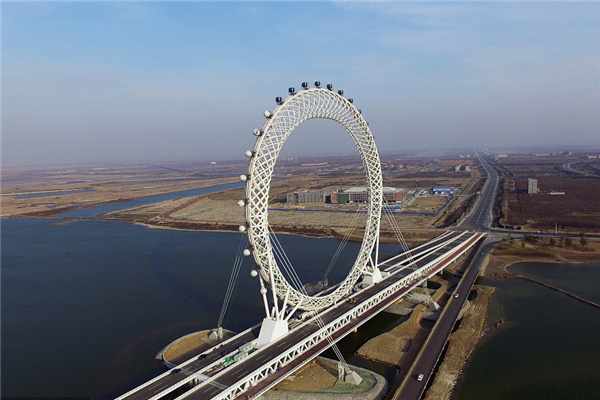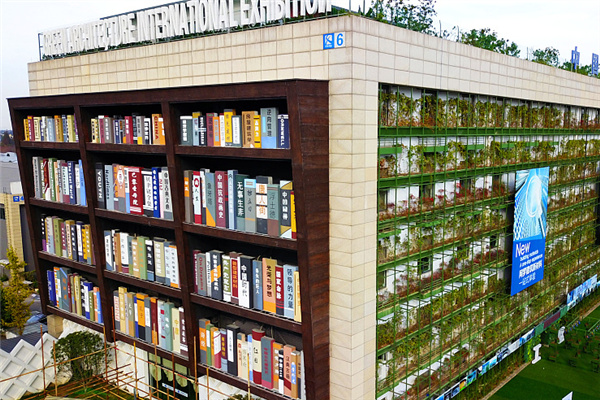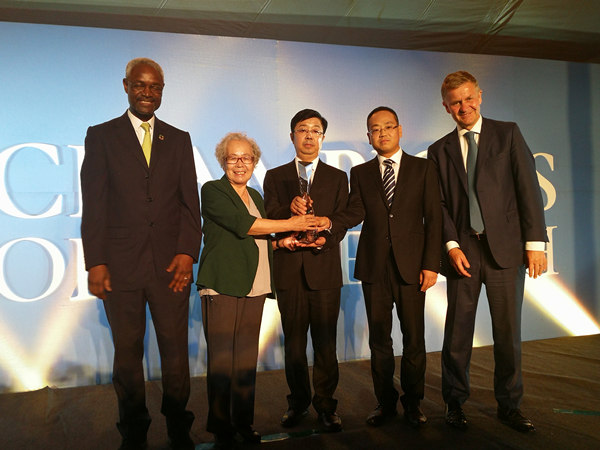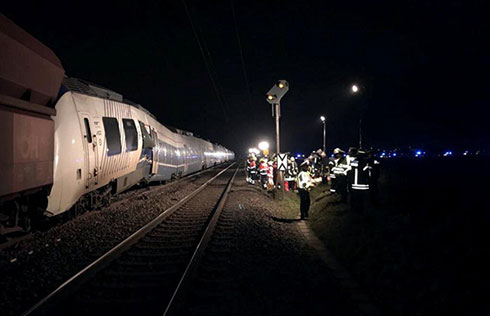

|
Potential buyers and property agents talk at the Beijing Spring Real Estate Trade Fair on April 10. CFP |
The biannual Beijing housing fair is often considered a trend-setter for the real estate industry's performance in China. Since its humble beginnings as a local fair, it has grown in stature and today attracts leading developers from France, Australia and the US.
This year also the fair evoked good response. The latest Beijing housing fair was held at the China World Trade Center from April 8 to 12. According to Xinhua reports, the fair attracted over 150,000 visitors, while contracts worth 3.1 billion yuan were signed.
Though skeptics dismissed the figures as being cooked up by developers, the reality is that property sales have started rebounding in China. Reports from Beijing, Shanghai, Shenzhen, Chengdu, Hangzhou and many other cities point to increased sales in March, in terms of new and second-hand dwellings.
The robust sales in March have helped China gain, in the first quarter of 2009, an increase in the sales of new housing units of 8.2 percent year-on-year, including an even stronger 8.7 percent rise in residential housing, according to the National Bureau of Statistics (NBS).
In Shenzhen, a migrant city adjacent to Hong Kong, housing sales in the first quarter reportedly doubled over the previous quarter.
So much so that even furniture merchants are now beginning to see the light at the end of the tunnel, compared to when they had to cut prices by nearly 25 percent in the first two months.
The robust sales, however, have not necessarily pushed up prices. In February, the nation's general housing price index declined for the third month in a row, by a negative 1.2 percent year-on-year, according to the NBS.
That led E-House, a Shanghai-based real estate consulting firm, to predict an even deeper price slump in March, probably by a negative 5 percent year-on-year - while the NBS figures revealed it was a negative 1.3 percent.
Some industry observers even went to the extent of predicting that developers would have to cut offer prices by nearly 40 to 50 percent by the end of the year.
The State Council Development Research Center, however, said it expects general housing prices to decline at a much lower rate of 10 percent or even lesser.
The indicators clearly show that on the price front it is more or less going to be a flat year, while in terms of sales it would be a much better one. If this turns out to be true, then it would be a rare situation, wherein it would benefit both homeowners and residential housing investors.
Let us take a closer look at how this could be possible. The obvious question is how can there be more sales but not so much in terms of price increases. Further on, one may wonder how the middle-class buyers suddenly have more affordable home-buying options.
Reversal of fortunes
Experts are also not too sure whether there is any correlation between the 4 trillion yuan fiscal stimulus plan and the reversal of fortunes in the real estate market and also whether the package would continue to help in creating more choices for potential home-owners and investors.
Many argue that the stimulus plan is impacting the housing market in a positive way, something that is sweet music to Premier Wen Jiabao and his team of economic advisors, and boosting China's long anemic domestic consumption, at least in the housing market.
Home-buyers have not earned as mnya direct incentives from the stimulus plan as car buyers. There are some cuts in the interest rates, but not as much as in the case of cars with smaller engines.
What has made the difference is the plan by the government to build up urban public infrastructure in the last few years, especially subways and roads. This has made it possible for home-buyers who were once deterred by exorbitant downtown prices, to shop for cheaper houses in the more distant suburbs.
Subway development
Beijing is an example. The city did not embark on a large-scale subway development plan until 2004 when work on three new lines, with a total length reaching 80 km, began.
By the end of 2008, Beijing had eight subway lines in operation, with a total length of 200 km. According to planners, the city's subway network will expand to 561.5 km in 2020, exceeding that of New York City.
In tandem with all these, new housing complexes have sprung up even beyond the Fourth Ring Road, once considered the city limits. More housing projects are coming up beyond the Fifth Ring Road and Sixth Ring Road, and some even in distant suburban towns.
Some of the smaller towns in Hebei province, such as Yanjiao and Langfang, are already connected with the national capital city by expressways. They are now seeking light rail connections - for the purpose, as local officials put straightforwardly, of attracting people.
They are unlikely to be let down, now that a substantial part of Beijing's 4 trillion yuan stimulus package is allocated to the development of public infrastructure - both cross-regional and urban.
In fact, according to sources from the Beijing housing fair, most of the sales contracts actually went to the smaller units in the relatively distant suburban housing complexes. In contrast, the downtown high-end and luxury units, priced from 15,000 yuan per sq m up, had very few enquiries.
What all this leads one to conclude is that the government-sponsored road and subway projects are in a way a kind of indirect financial subsidy to home buyers in the more distant suburban housing projects - so long as they are willing to buy a car or to spend relatively more time on daily commutes.
Infrastructure boost
The government's heightened interest in infrastructure development will inevitably pave the way for more suburban housing projects targeted to the not so rich young professionals in the next couple of years.
With the increasing de facto subsidy available from the government, investors would probably start losing interest in large units, especially the super-expensive ones, and opt for the smaller units in the most convenient locations instead.
This being the case, it can be said that the most effective mechanism to keep up some competition in a city's housing market is its growing mass transit system.
Chinese commentators often argue that housing prices in large cities are too high, almost unaffordable.
According to a recent report by the Beijing Municipal Academy of Social Sciences, the average new housing price in the Chinese capital city is 15,000 yuan per sq m, compared to the average local household's annual disposable income of 66,000 yuan.
That being the case, a 100 sq m unit would cost 1.5 million yuan, or an almost 23 years' income for an average household. By contrast, the report quotes the World Bank as saying that, ideally, the housing price should be just five times the household annual income.
But what the report failed to explain is why an average household must buy a 100 sq m unit.
It also failed to mention that in major cities in the world, it is hard to buy a new house for a price equal to a household's only five years' income. In Manhattan, it easily requires up to eight years', if not even more.
In Beijing, at least at the moment, there are new housing complexes in the suburbs that are selling at around 9,000 yuan per sq m. In Hebei developers are selling housing units priced between 3,000 to 5,000 yuan per sq m.
So an average Beijing household can buy a 70 sq m unit for the price of less than 10 years' income in the suburbs, and for less than five years' income in Hebei - as some people have in fact done.
At the same time, for relatively wealthy citizens, such as middle-level managers in some of the national industrial and financial companies, with monthly salaries exceeding 10,000 yuan, such an option looks feasible. If the husband and the wife are earning the same level of income (a very likely case in Beijing), then they can keep their annual household income close to 250,000 yuan including bonuses. If they choose to buy a 1.5 million yuan unit, the price is just six years' income.
So, depending on the individual income level and his/her preference, housing prices in China, except for the luxury-grade projects, are not as prohibitively high as many Chinese would like to admit, especially in the angry Internet forums or publications aimed at appealing to their sentiments.
Once a cross-regional social security system is in place, especially when people can transfer their medical care accounts across the nation, many retired people in large cities may opt to move to places with a better environment and cheaper daily supplies.
There are already cities, most noticeably Yantai in Shandong province, which are already marketing their local housing projects in Beijing, with senior citizens as their main targets.
|
A Beijing Subway Line 5 train runs through the Tiantongyuan residential community in northern Beijing. Chen Jian |

(China Daily 04/20/2009 page12)













